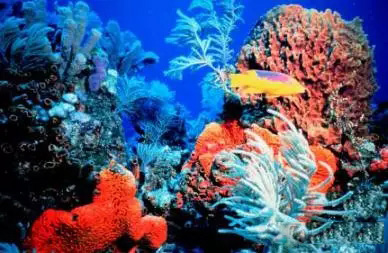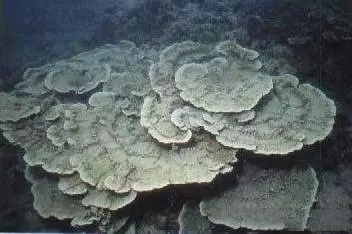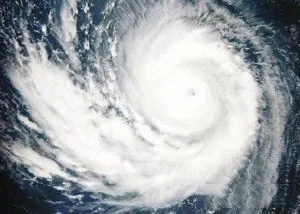Coral reefs are one of the most diverse ecosystems in the world, and thousands of species depend on fragile reefs for their survival. How do scientists learn climate from these beautiful and important underwater ecosystems? Many coral reefs have existed for millions of years, but they are extremely sensitive to changes in climate change. Corals are affected by ocean warming (sometimes whitening when temperatures rise or fall), pollution and runoff, and changes in seawater pH, which tend to reduce ocean acidification as more carbon dioxide enters the ocean.

As corals grow, they form skeletons by producing calcium carbonate from seawater. The density of these calcium carbonate skeletons changes with changes in water temperature, light and nutrient conditions, making coral skeletons that form in summer at different densities than those that form in winter. These seasonal density changes create tree-like rings. Scientists can study these growth rings and other characteristics to determine climatic conditions during the coral growing season. These growth zones also allow scientists to pinpoint coral samples to year and season.
To gather data and information about coral growth zones, scientists bring their submersibles and dive in the reef. Once in place, they use a hollow, diamond-encrusted drill to collect small samples of coral without harming the animals. Sometimes the banding patterns in these samples are apparent only by visual inspection, but scientists usually use x-ray imaging software to see the patterns. The scientists then label the different layers by year and season, and extract samples from the layers for precise chemical analysis.
For example, analyzing the composition of trapped oxygen atoms is used to estimate seasonal temperature and rainfall and build a record of how it changes over time. Times of environmental stress, including disease outbreaks or bleaching - can also be identified within the strips when coral animals expel the symbiotic algae that inhabit them and give them their color. These markers help scientists identify extreme climatic conditions that are detrimental to coral reefs.
By using corals to determine the past climate of tropical oceans, scientists can also predict future trends in the climate system


Information about tropical ocean corals can be very useful in examining the El Ni?o Southern Oscillation. El Ni?o, produced by the Pacific Ocean, greatly affects weather from Asia and Australia to North and South America. By sampling corals in the Pacific Ocean, scientists can identify El Ni?o over the past few hundred years and use this information to improve predictions about future events and changes in this natural climate pattern.